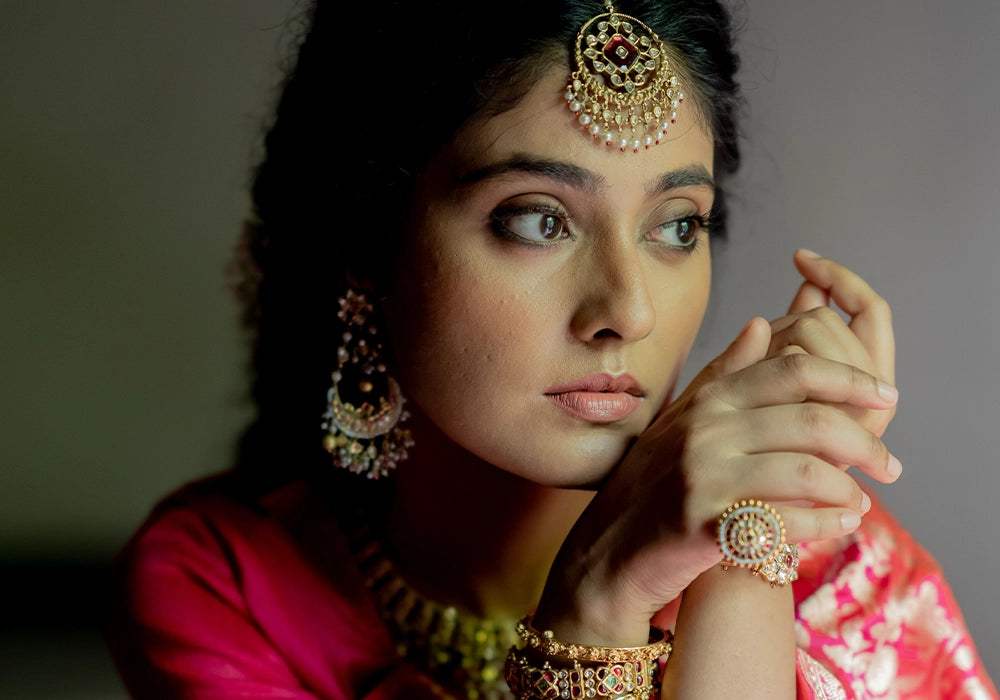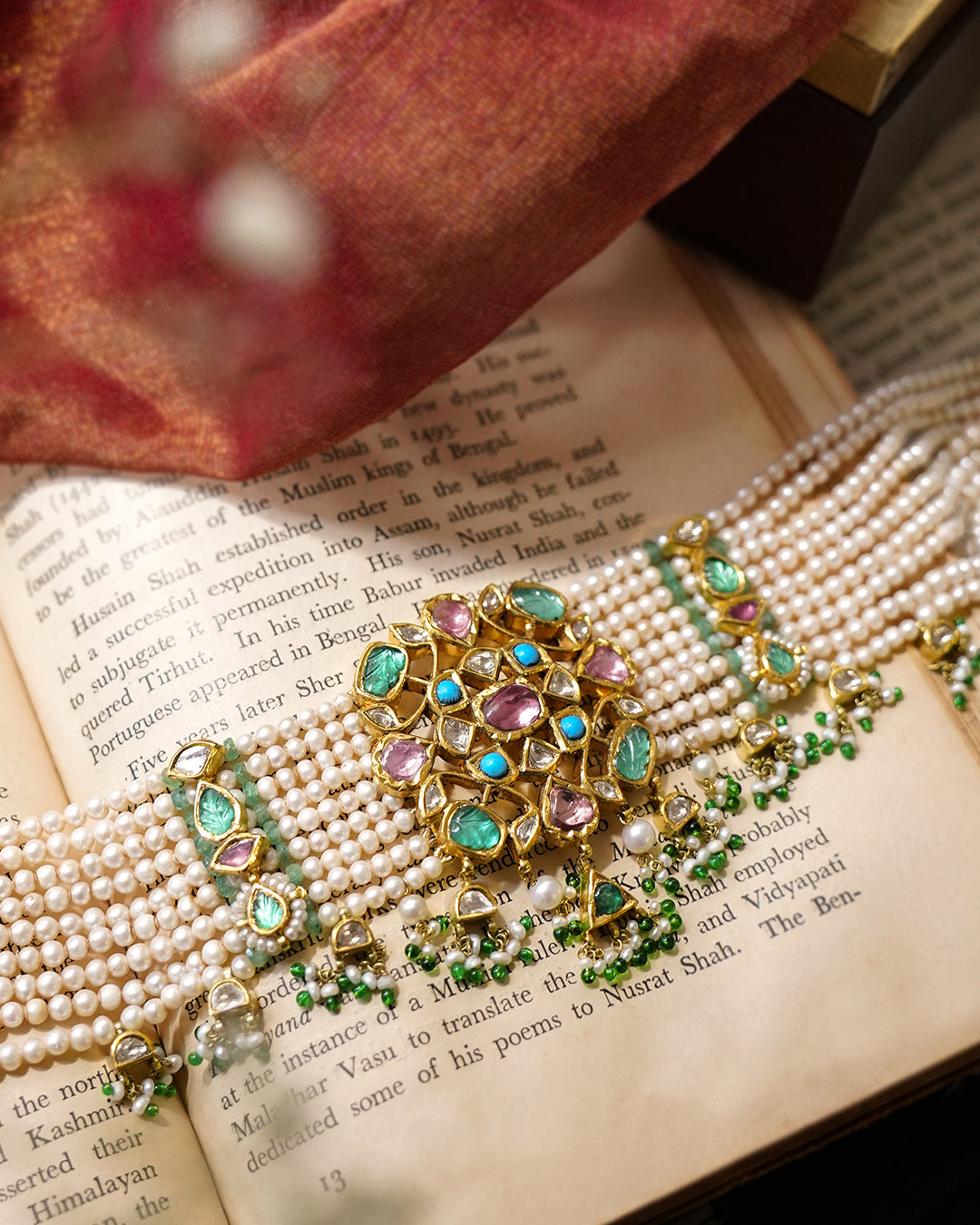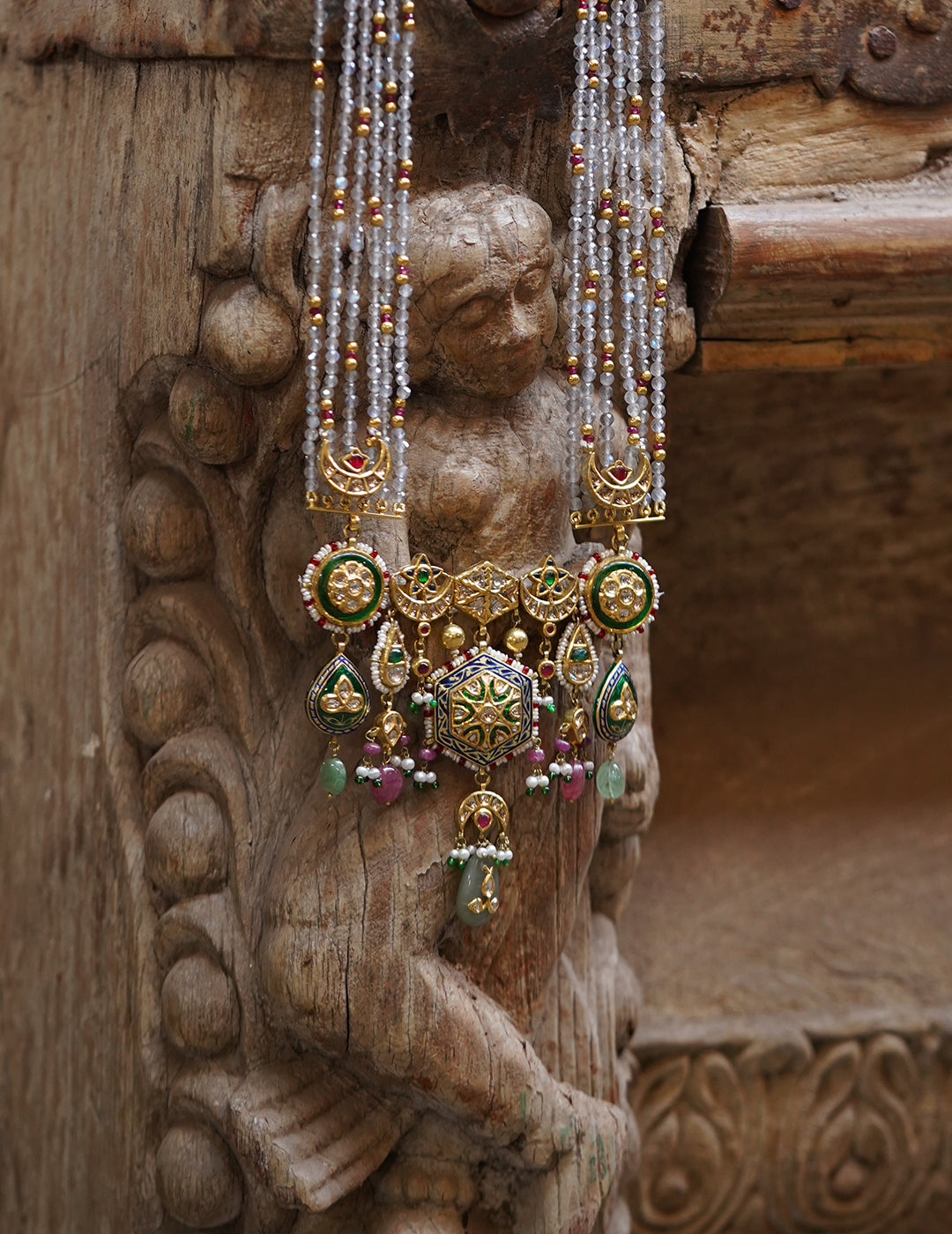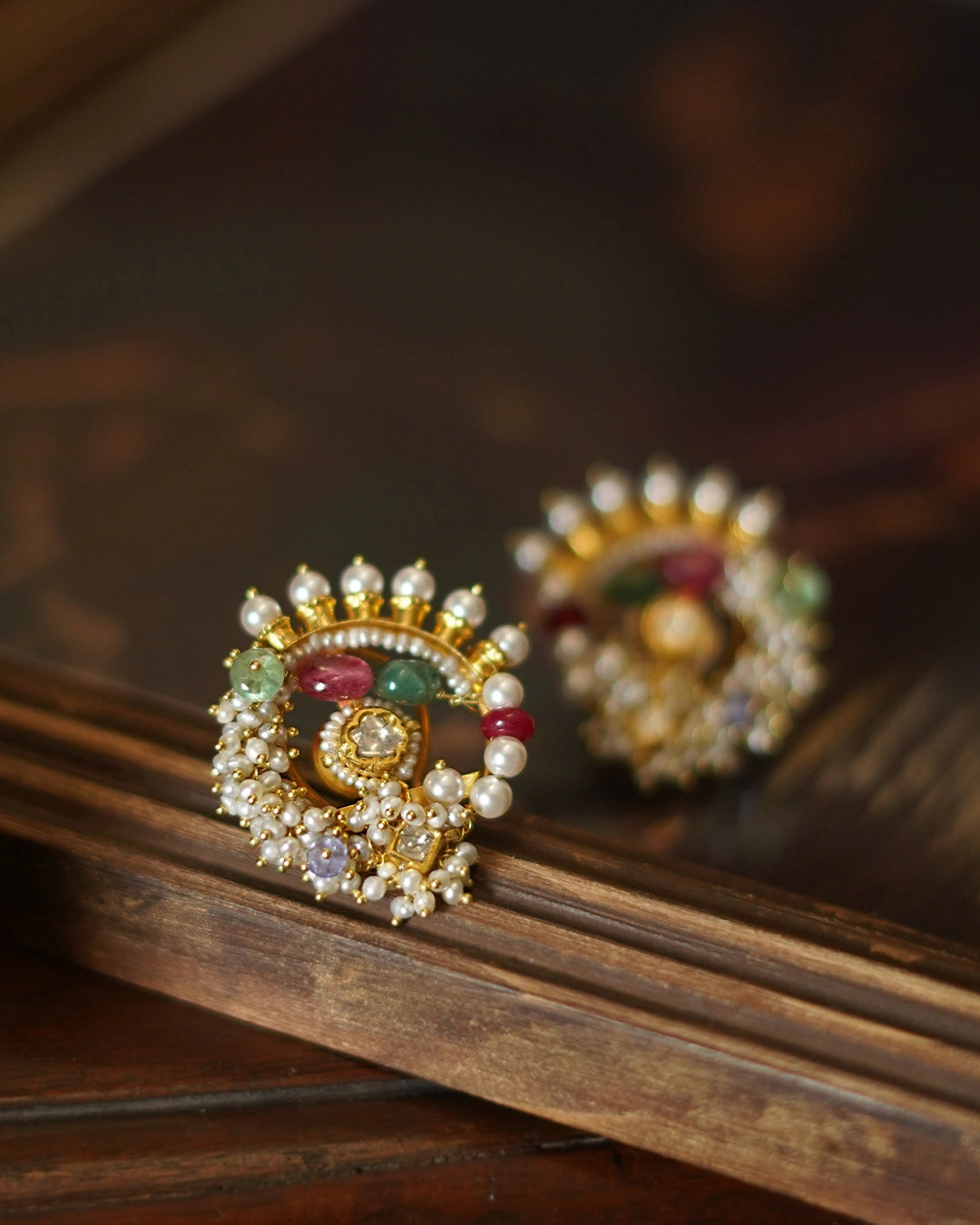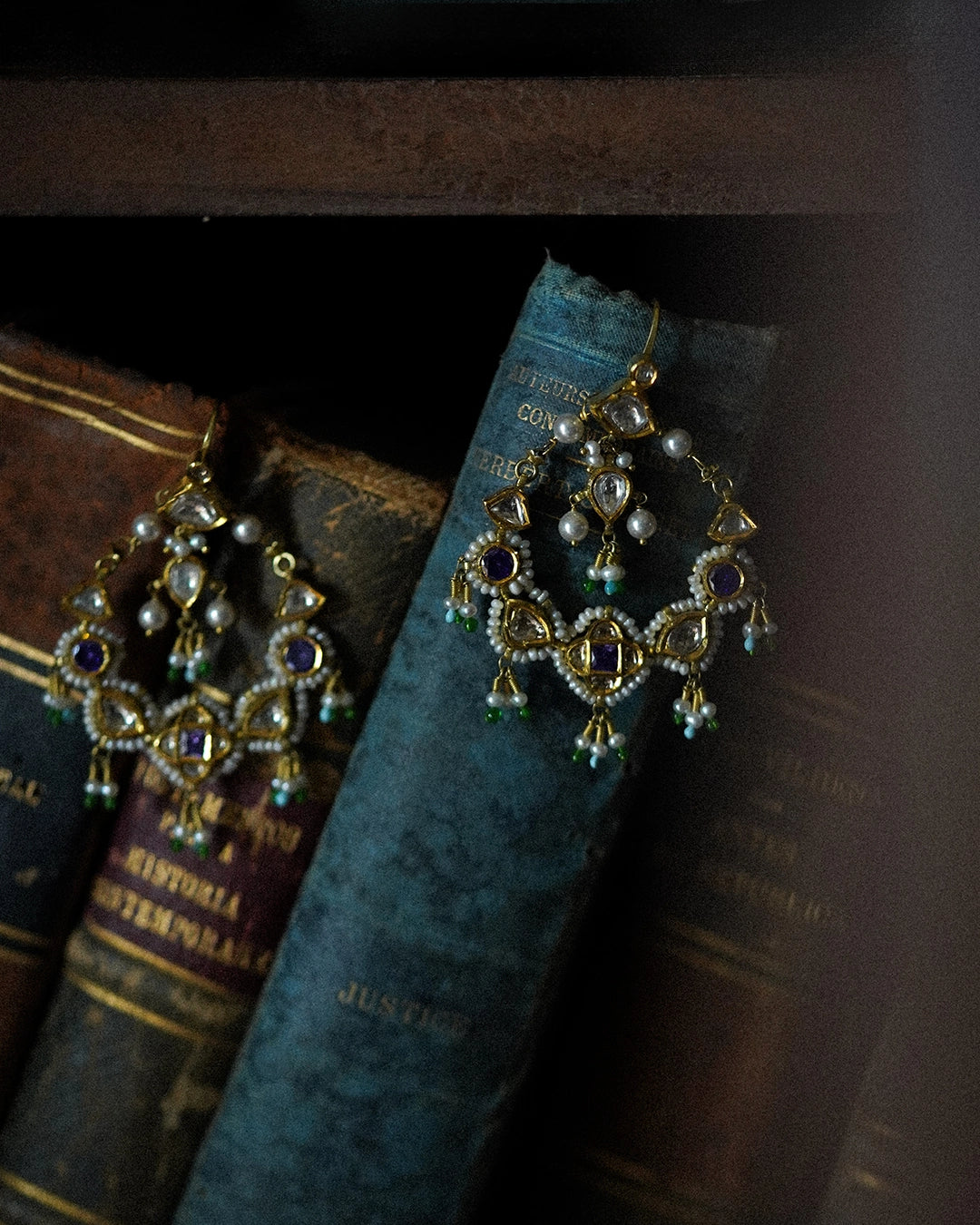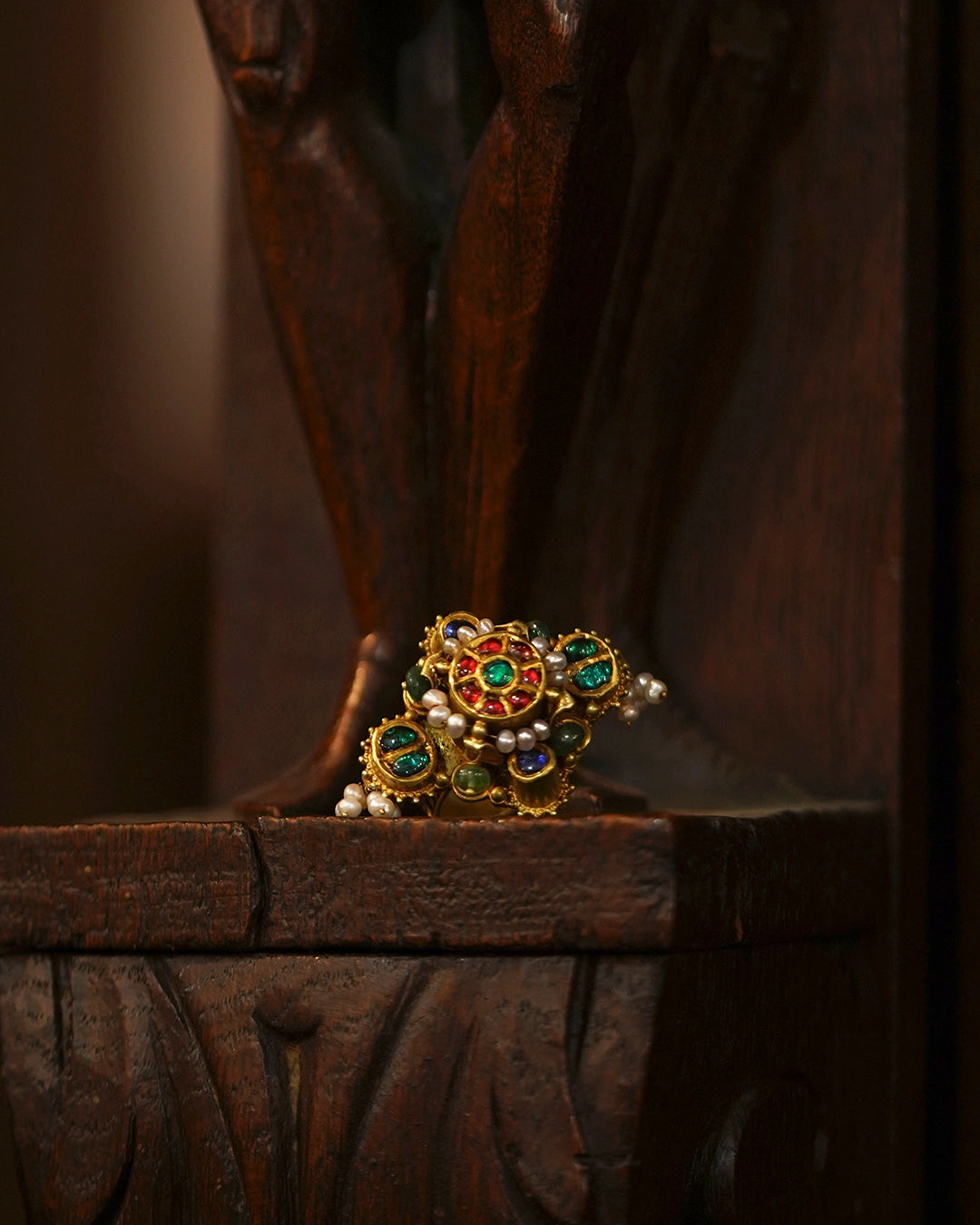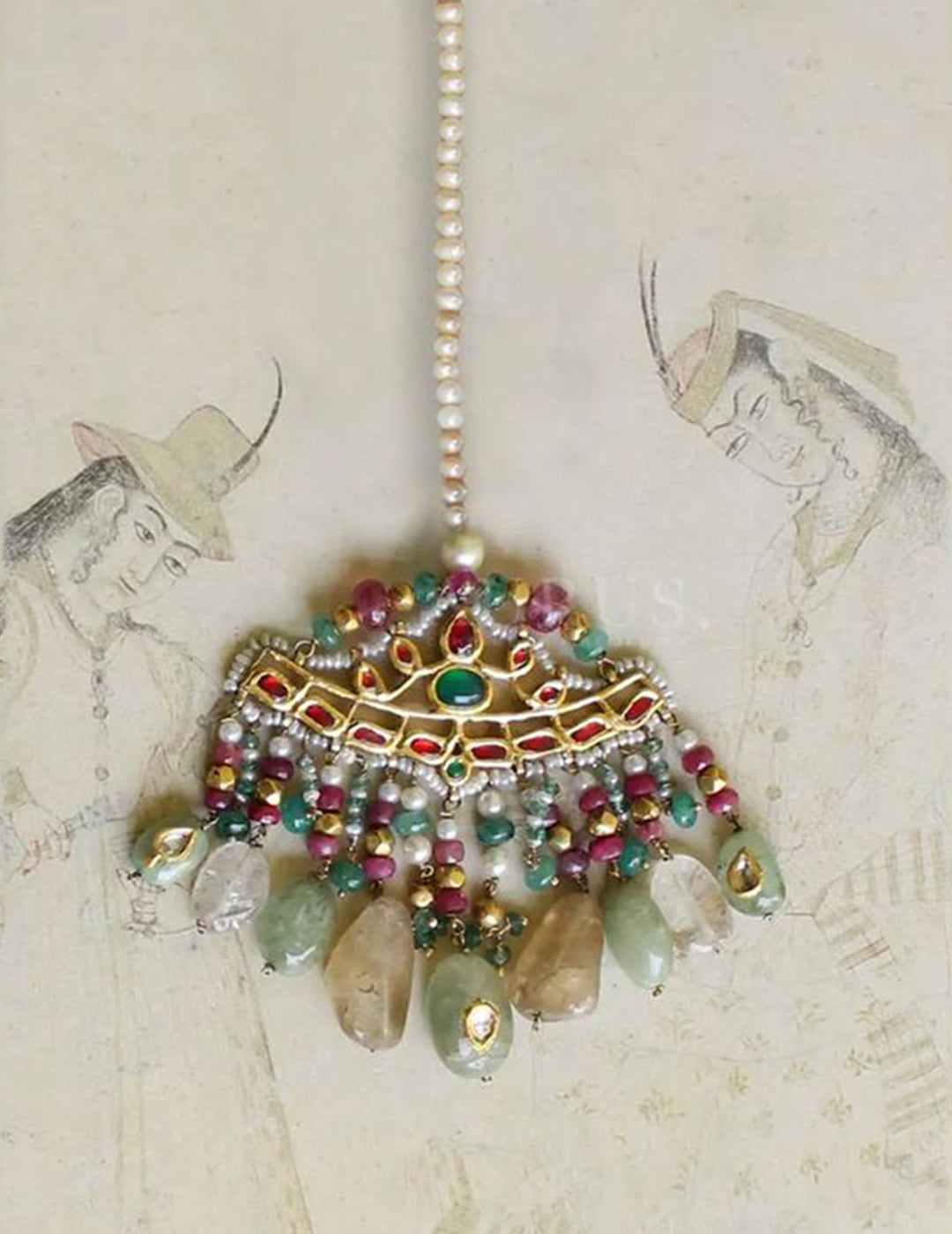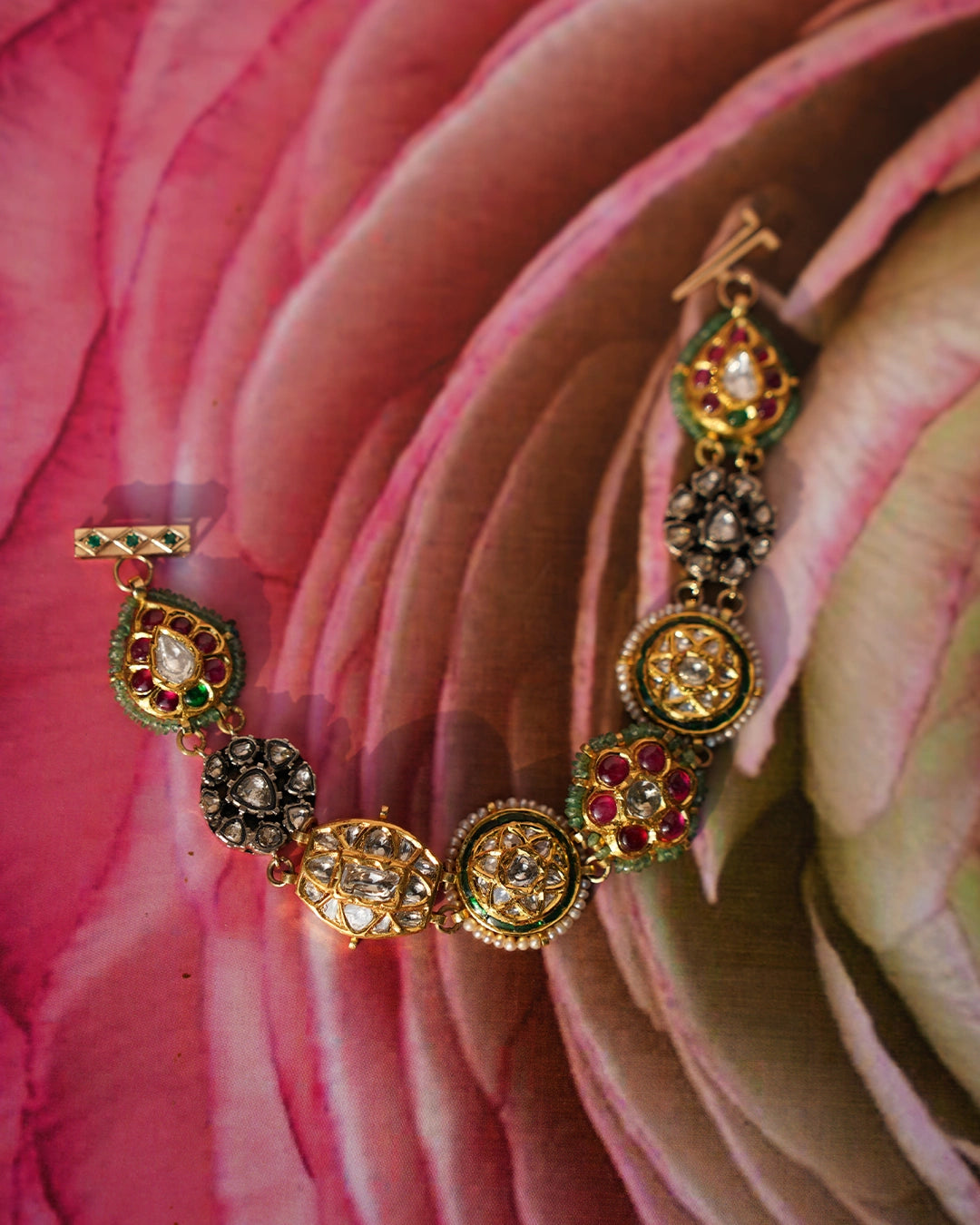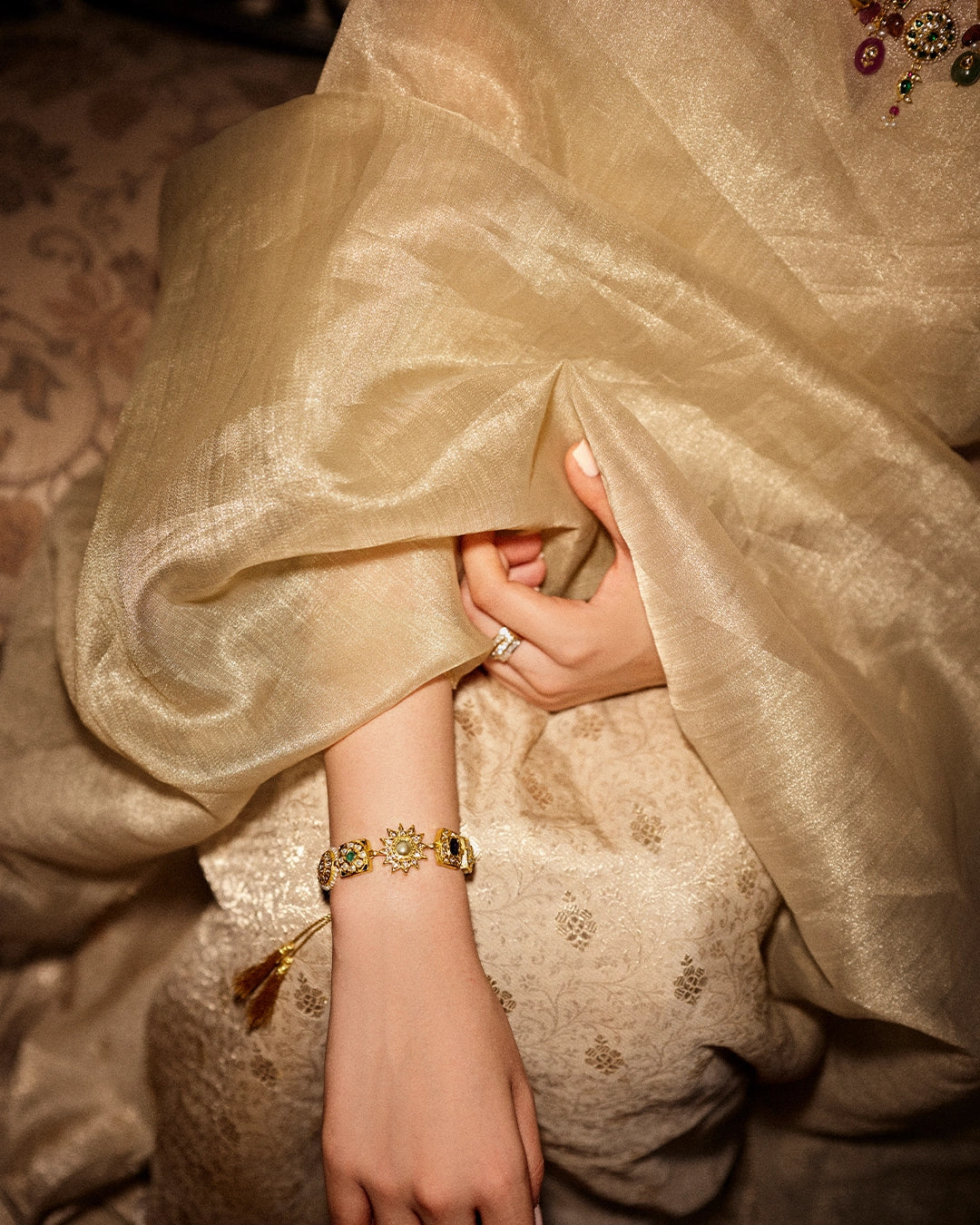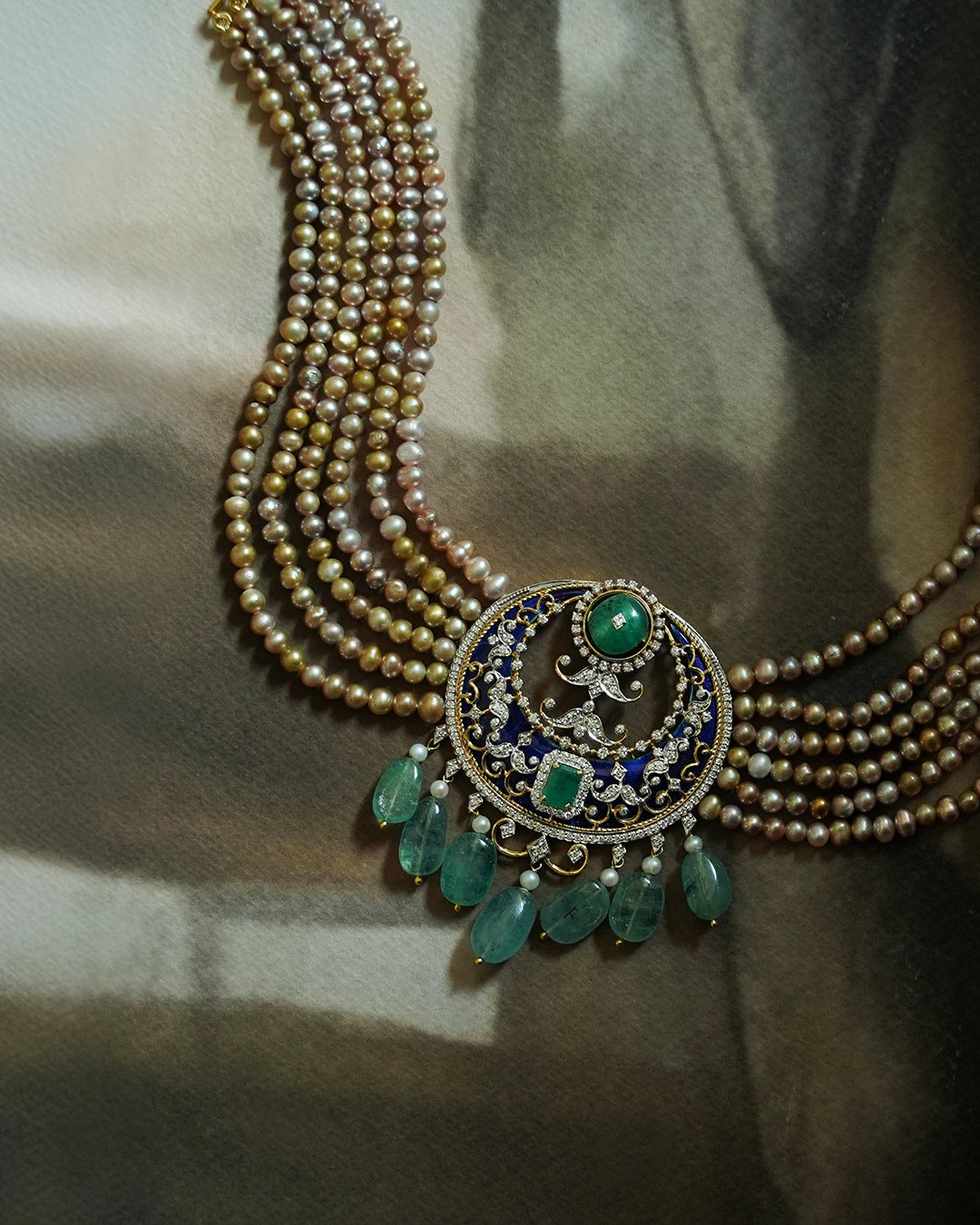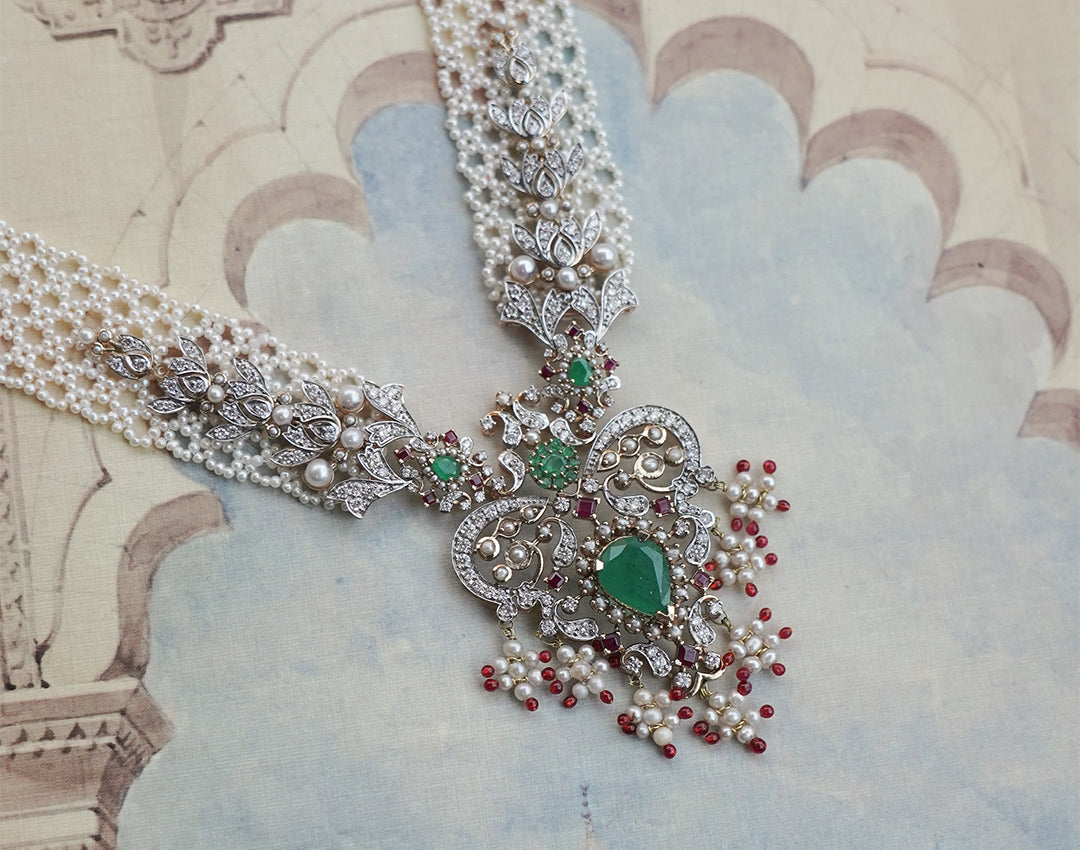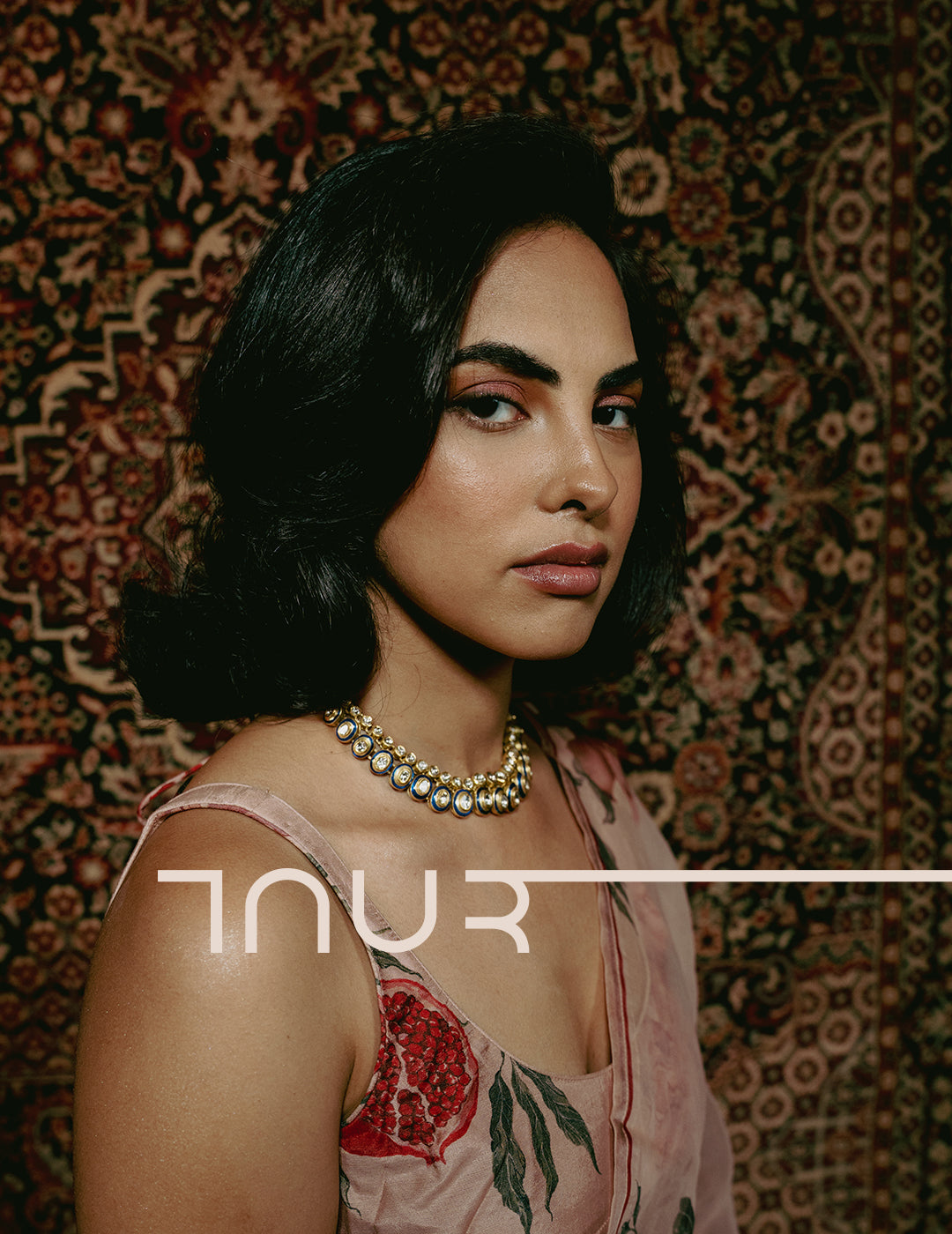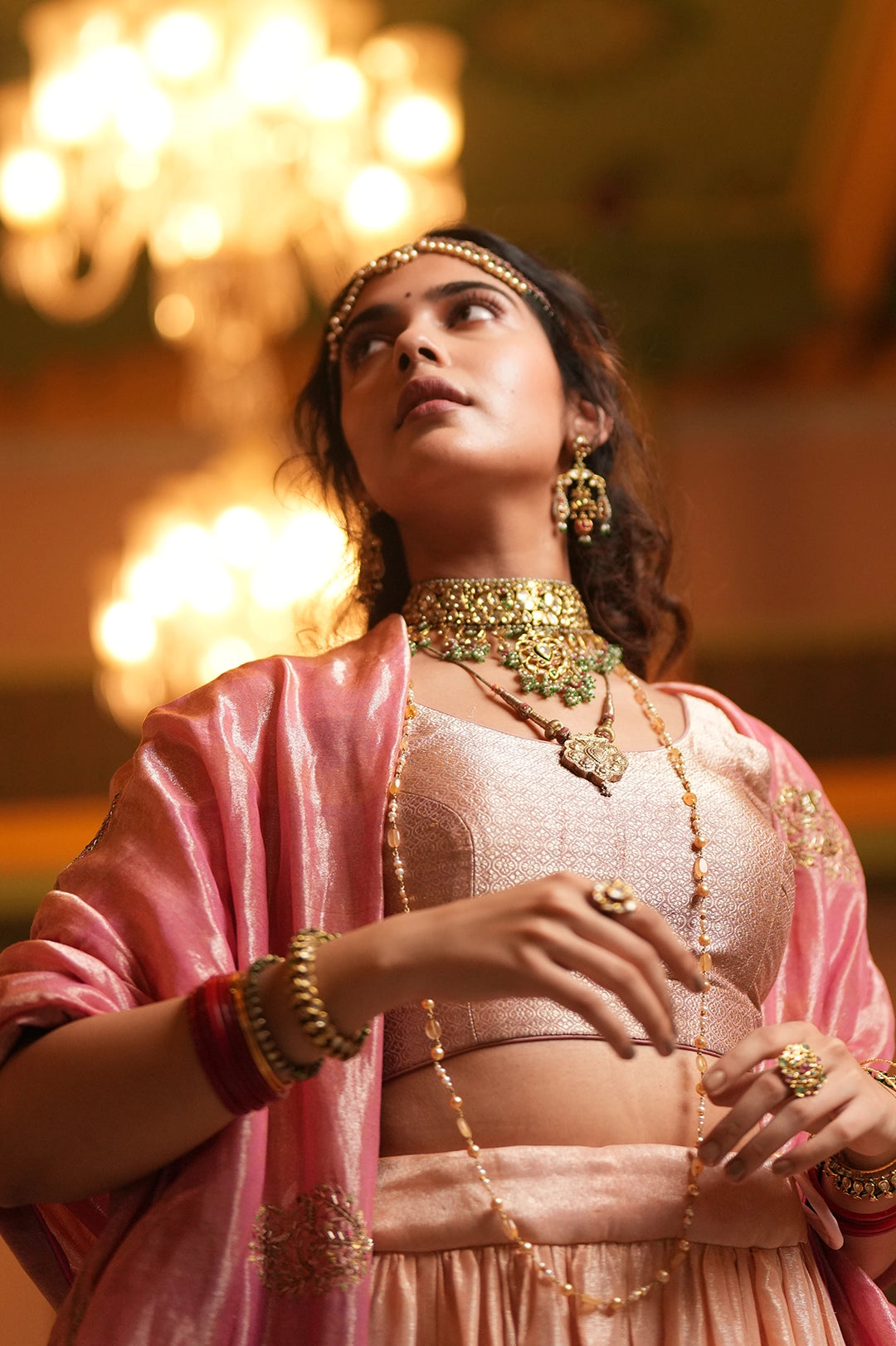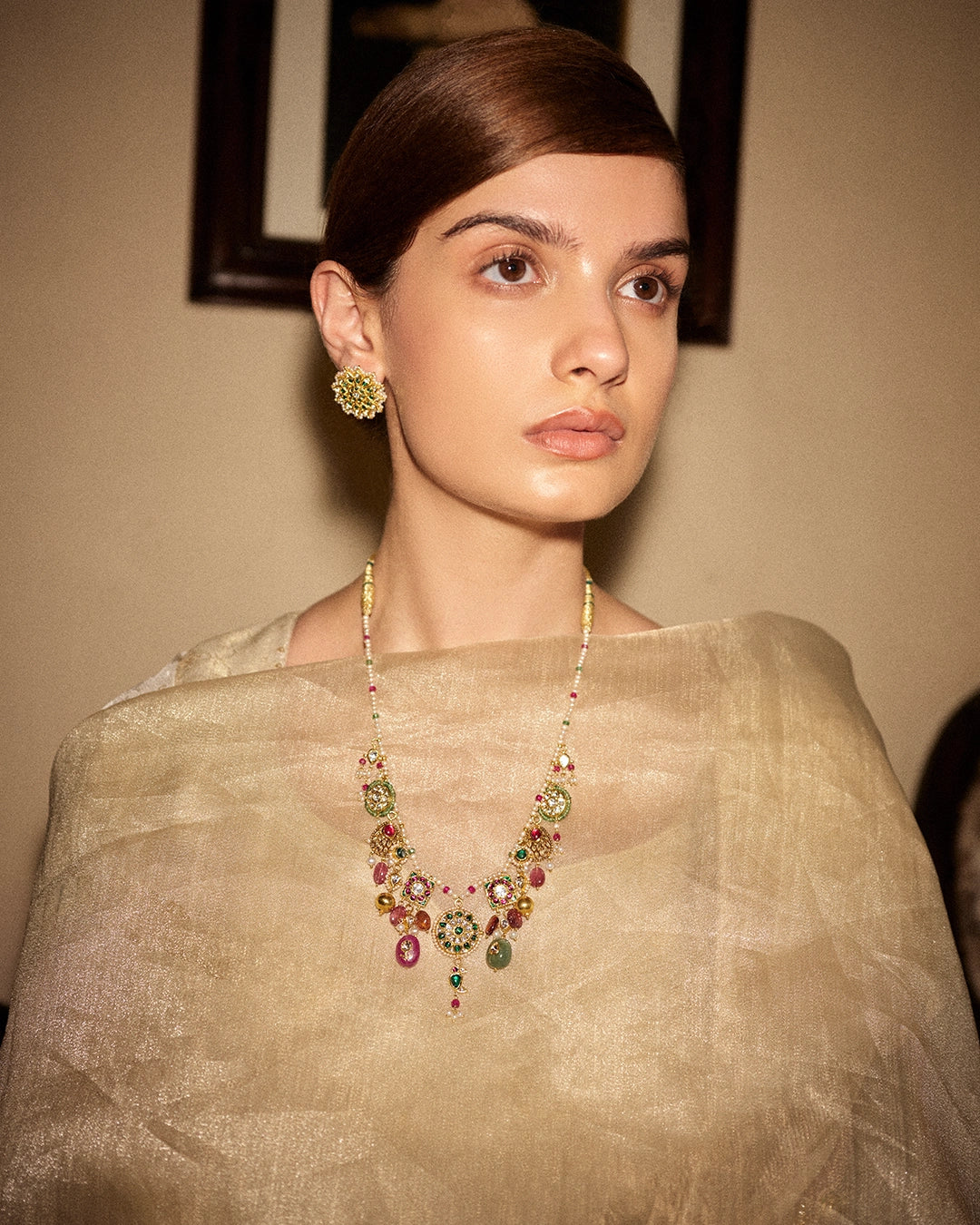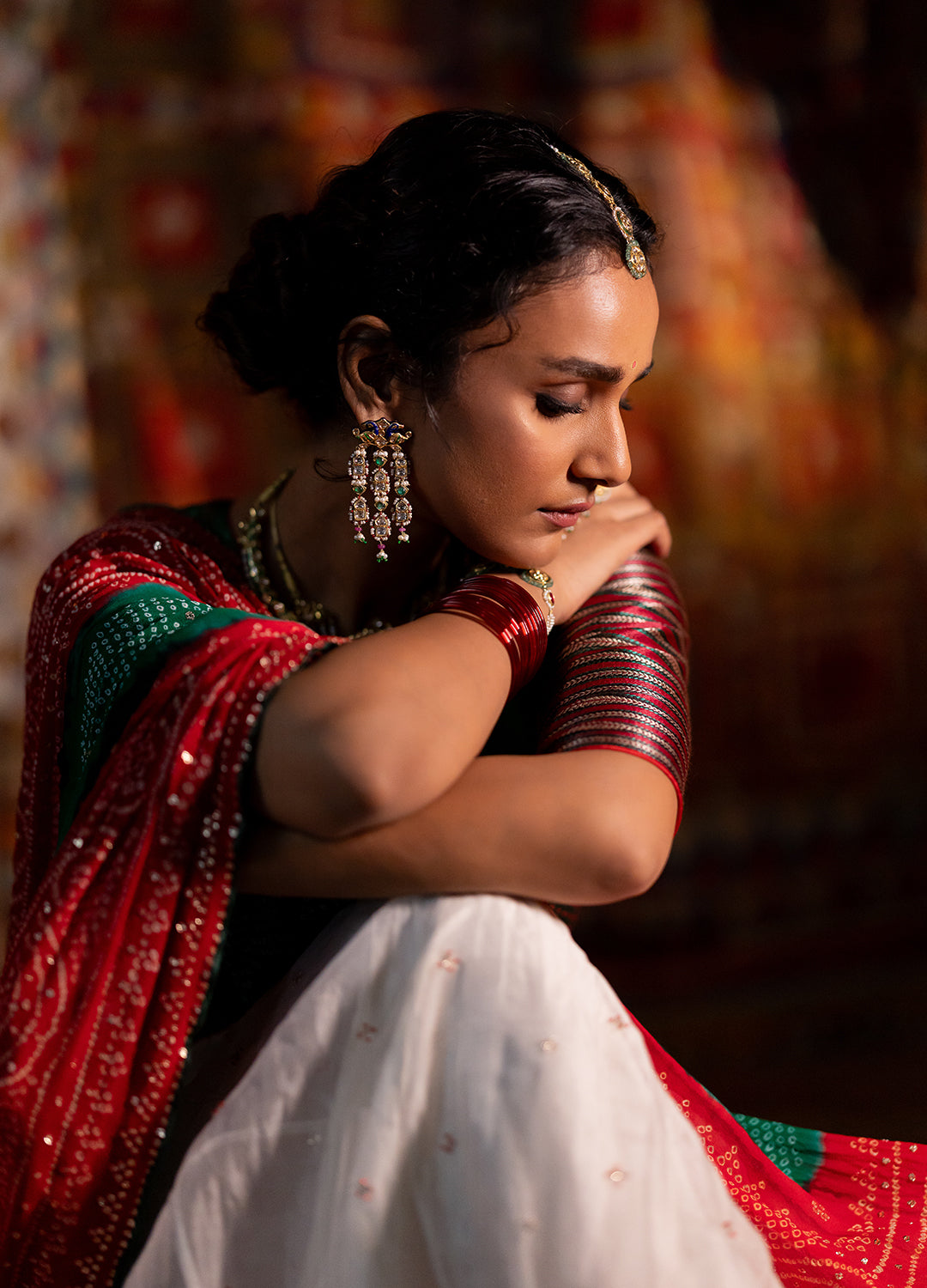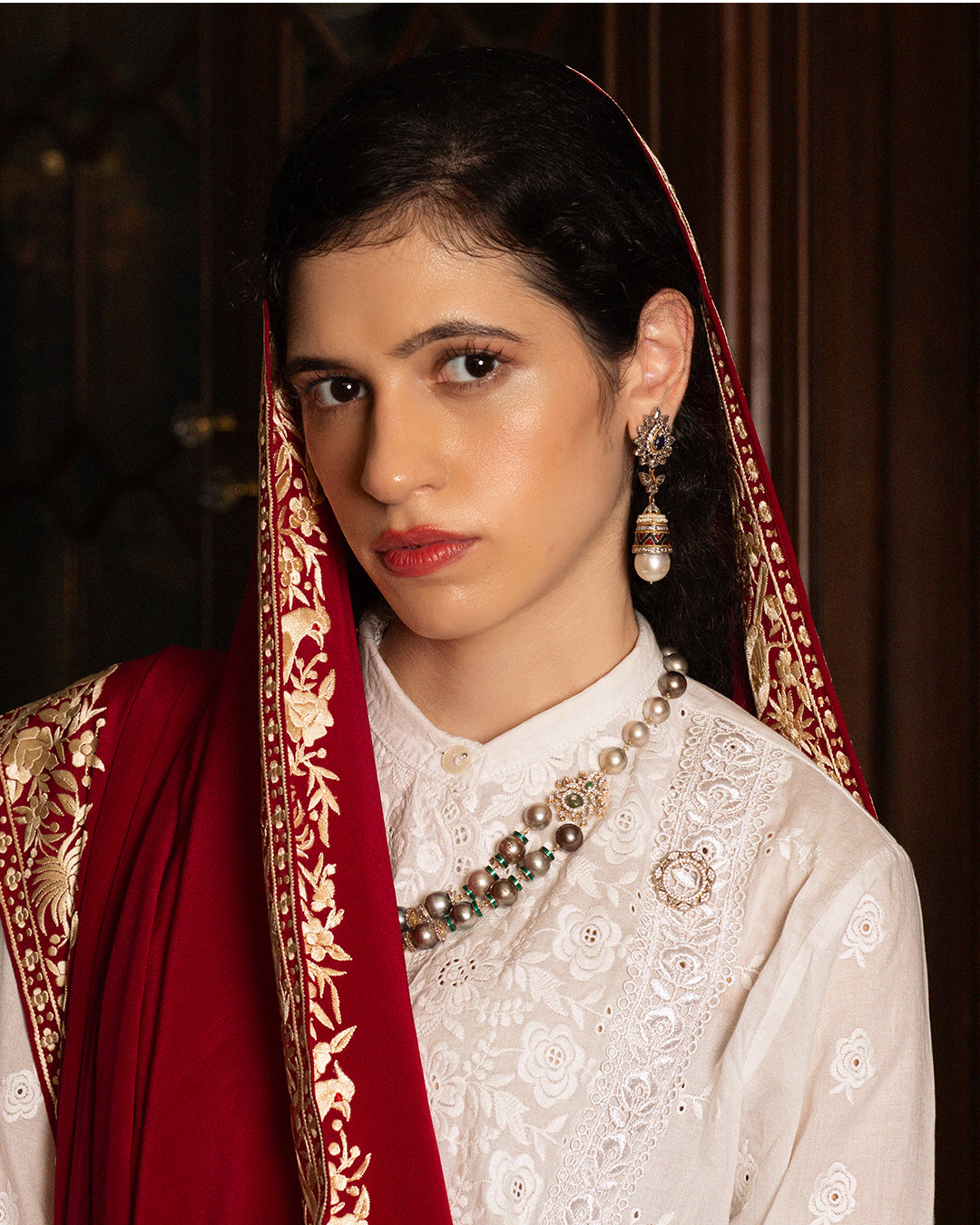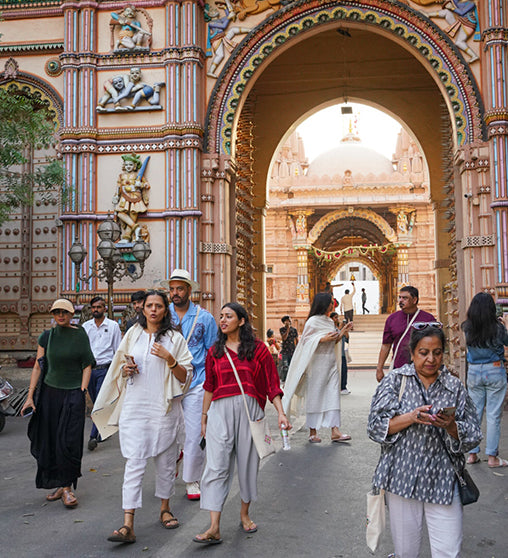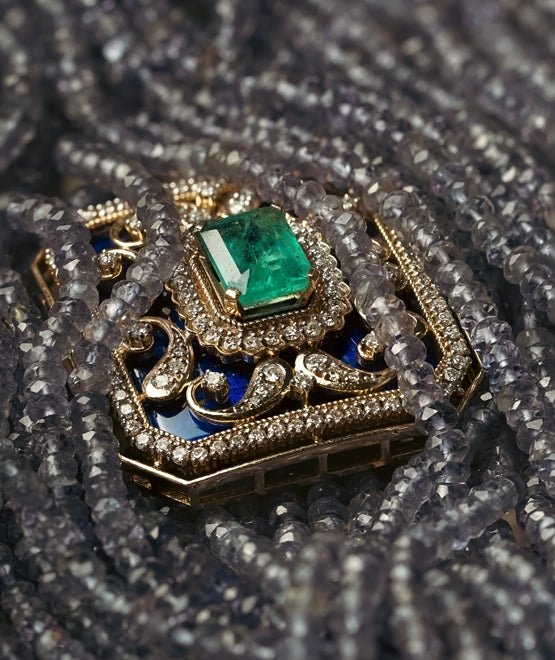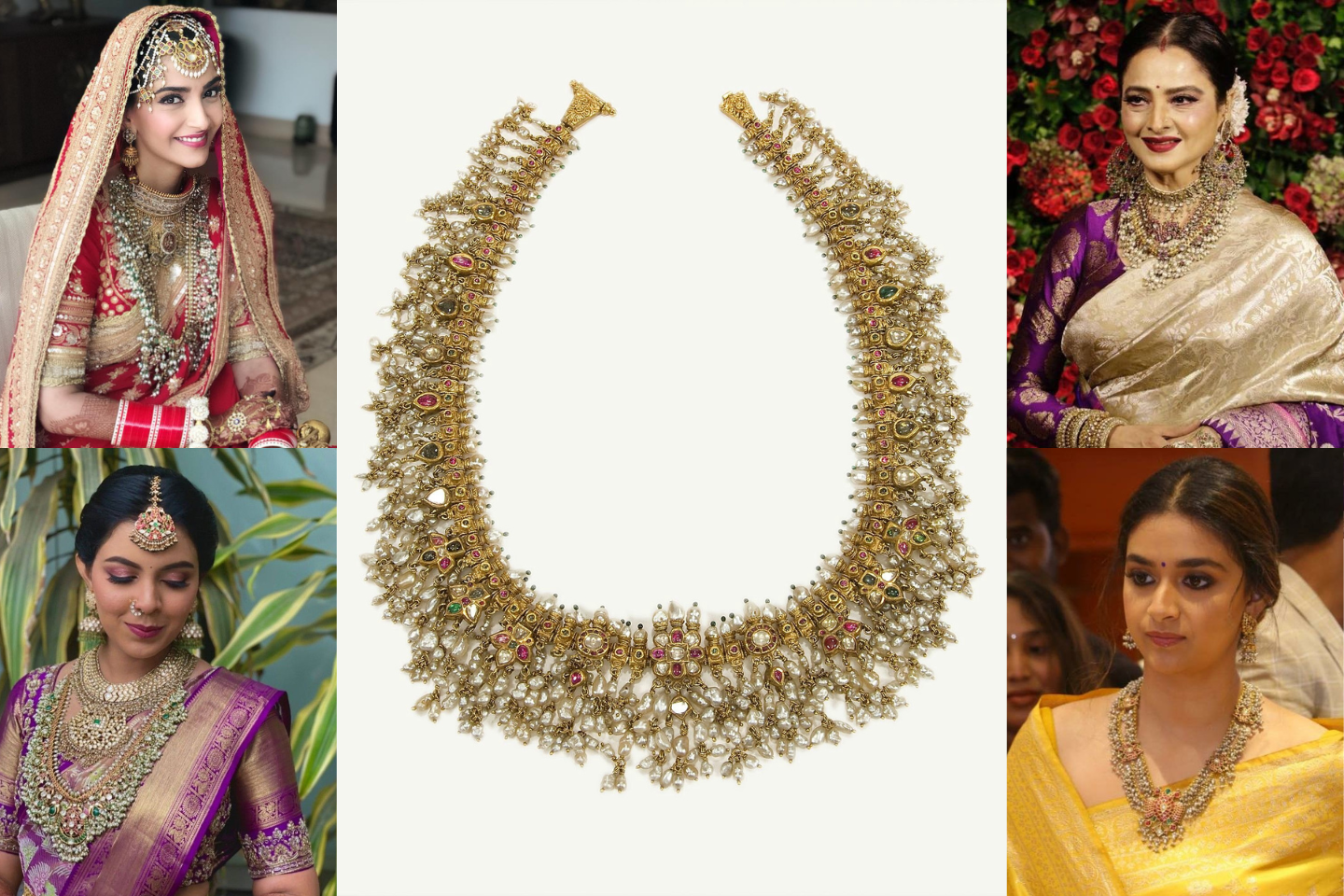South India is known for its opulent jewelry, especially its grand necklace designs, such as the Kasu Malai, Manga Malai, Makara Kanti, and Malligai Arumbu Malai to name a few. These days, South Indian bridal necklaces are sought after by not just brides from the South wanting to celebrate their roots but also by brides belonging to other parts of the country. One such bridal necklace is the Guttapusalu necklace.
Guttapusalu—Indian Necklace from the Coast
A necklace design typical to the Indian state of Andhra Pradesh, the Guttapusalu Haram, as it is traditionally known, is an intricate gold necklace that originated in areas around the historic pearl fisheries along India's Coromandel coast in the late 18th century A.D.
This South Indian necklace has fringes of clusters of tiny pearls that resemble a swarm of small fish (gutta). These tiny pearls are pierced to act as beads (pusal). This is where the necklace gets its name from.

In India, as Usha Balakrishnan points out in her book Dance of the Peacock, no gem has been as frequently utilized in traditional Indian jewelry as the pearl, which she goes on to call The Ethereal Seed. The waters off the coast of South India were the main source of pearls in ancient times and the most valuable and sought-after pearls came from the Persian Gulf and Gulf of Mannar. Thus, pearls became a frequently used material in Indian jewelry designs.

Indian Pearl earrings, early 19th century
Image courtesy: The Met Museum

Indian pearl earrings, ca. 1810
Image courtesy: The Met Museum
Apart from the production of pearls, the Southern part of India is also known for its gold—the historic Kolar Gold Fields are an example, and its splendid diamonds—the globally-renowned Golconda diamonds. Embellished with Emeralds and rubies, and the extravagant Guttapusalu necklace was born.

A sophisticated gold piece with eighty-three open, tubular parts that are each set with a single diamond, ruby, or emerald, as well as a genuine pearl on top, alternates on either side with seven petal-shaped decorations.
A double tube pendant with an oval-shaped element attached on either side that is set with a single diamond, cabochon rubies, and three natural pearls on top, serves as the center pendant.
A petal-shaped pendant suspended from it is set with a ruby cabochon and irregular pearls. The pendants on either side of the oval-shaped components are embellished with three florets. A core diamond is surrounded by four cabochon rubies and four diamonds in the largest pendant, which is additionally topped with three pearls. A single diamond and irregularly shaped pearls were suspended from it. Uneven pearls are strung in groups on the gold wire in each pendant. All of the twin tubular components are connected by a triangular gold screw-post clasp to a gold wire necklace that has been "woven."
Image and content courtesy: Van Gelder Traditional Indian Folk Jewellery via Alain Truong
Who Has Worn the Guttapusalu Necklace?
In ancient times, only the royals of the South used to wear this ostentatious Indian necklace. However, with time, the daughters of affluent men as well as ladies from the Matriarchal lineage of Southern India started wearing the Guttapusalu necklace.
These days, the Guttapusalu necklace is a popular choice among women across the country, especially brides. Even Bollywood has been touched by its popularity. The renowned Bollywood actress Sonam Kapoor chose to wear a magnificent Guttapusalu Haram with her North Indian wedding attire.

Image courtesy: Nikita Jewels
The evergreen Bollywood actress Rekha also wore a Guttapusalu necklace to one of the events she attended.

Keerthy Suresh, another renowned Indian actress was once seen wearing a simpler version of the Guttapusalu necklace at an event he was attending.

Image courtesy: Twitter
